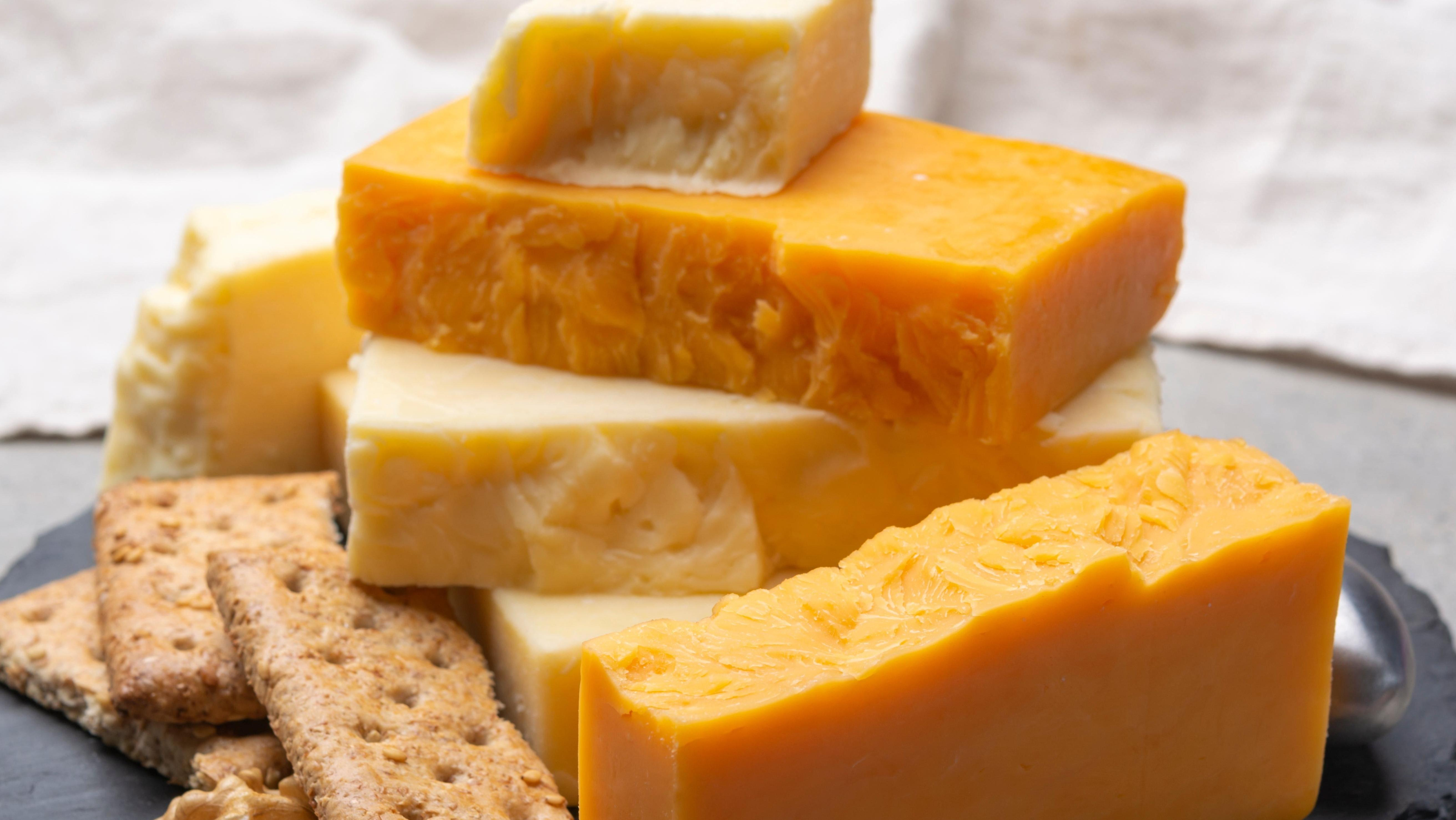White Cheddar Is A Lie
Big Cheese has been misrepresenting cheddar all along.
When looking at a block of sharp cheddar cheese versus a block of white (equally sharp) cheddar, some people might say one is creamier than the other, or has a stronger flavor. Strong preferences might be expressed. But could you actually explain the difference, if someone asked you?
What is white cheddar?
White cheddar is actually closer to cheddar cheese's default state than its signature orange-colored counterpart. As explained by Wisconsin Cheese, a most reliable cheese source, the biggest difference between the two is that white cheddar does not have added coloring.
Yes, in its most natural state, cheddar cheese is actually white, or at most a bit yellow. That bright orange color you recognize it for is added in (more on that below). What this means is that, despite what your brain might be telling you, white cheddar cheese and orange cheddar taste exactly the same.
"There's no flavor difference," explains Erika Kubick, a former cheesemonger and author of the book Cheese, Sex, Death: A Bible for the Cheese Obsessed. "I have found that some of the fruitier, sweeter cheddars, like Prairie Breeze and Beecher's Flagship, tend to be white cheddars. It seems like they're taking on a life on their own, based on the market."
Despite this fact, white cheddar is still marketed differently than other cheddars and, of course, packaged separately. Cheetos, for example, features white cheddar as one of the flavors in its "Simply" product line, one that boasts "no artificial colors or flavors." However, despite Cheetos' obvious desire to portray these products as more healthy, the coloring used in orange cheddar is derived from a plant that is not harmful or "unhealthy" in any way.
Why cheddar cheese is usually orange
To achieve that desired orange color, cheddar cheese is dyed using annatto, the fruit of the achiote tree. The achiote tree is native to South and Central America, and the annatto fruit it bears is used in about 70% of natural food colorings.
So, if the cheeses taste the same without the food coloring, why add anything in the first place? For cheesemakers, this is part of the history of cheese, and a tradition that lives on. There was a time in England when cheddar cheese was made with milk from cows whose diet produced an orange tint in the milk. Although that is no longer the case, cheesemakers continue coloring cheddar this way using annatto. It's not just a nod to tradition; orange cheddar is what consumers know, and what they have come to expect.
It should not matter what color your cheese is, so long as it's cut and enjoyed the way you like. Don't let the marketing fool you anymore: All shades of cheddar cheese are created equal.
